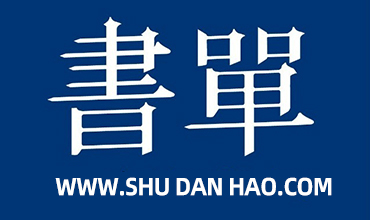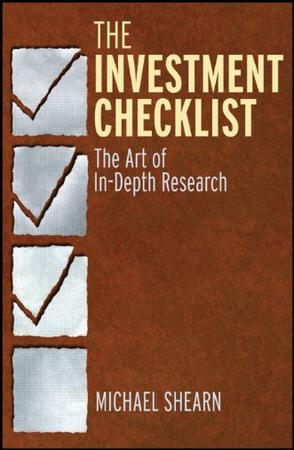
Michael Shearn《The Investment Checklist》
书刊介绍
内容简介
A practical guide to making more informed investment decisions Investors often buy or sell stocks too quickly. When you base your purchase decisions on isolated facts and don't take the time to thoroughly understand the businesses you are buying, stock-price swings and third-party opinion can lead to costly investment mistakes. Your decision making at this point becomes dangerous because it is dominated by emotions. The Investment Checklist has been designed to help you develop an in-depth research process, from generating and researching investment ideas to assessing the quality of a business and its management team. The purpose of The Investment Checklist is to help you implement a principled investing strategy through a series of checklists. In it, a thorough and comprehensive research process is made simpler through the use of straightforward checklists that will allow you to identify quality investment opportunities. Each chapter contains detailed demonstrations of how and where to find the information necessary to answer fundamental questions about investment opportunities. Real-world examples of how investment managers and CEOs apply these universal principles are also included and help bring the concepts to life. These checklists will help you consider a fuller range of possibilities in your investment strategy, enhance your ability to value your investments by giving you a holistic view of the business and each of its moving parts, identify the risks you are taking, and much more. Offers valuable insights into one of the most important aspects of successful investing, in-depth research Written in an accessible style that allows aspiring investors to easily understand and apply the concepts covered Discusses how to think through your investment decisions more carefully With The Investment Checklist, you'll quickly be able to ascertain how well you understand your investments by the questions you are able to answer, or not answer, without making the costly mistakes that usually hinder other investors.
作品目录
Preface xi
Acknowledgments xix
Chapter 1 How to Generate Investment Ideas 1
How Investment Opportunities Are Created 1
How to Filter Your Investment Ideas 14
Using a Spreadsheet to Track Potential and Existing Holdings 19
Chapter 2 Understanding the Business—The Basics 21
1. Do I want to spend a lot of time learning about this business? 22
2. How would you evaluate this business if you were to become its CEO? 23
3. Can you describe how the business operates, in your own words? 26
4. How does the business make money? 28
5. How has the business evolved over time? 29
6. In what foreign markets does the business operate, and what are the risks of operating in these countries? 30
Chapter 3 Understanding the Business—from the Customer Perspective 39
7. Who is the core customer of the business? 41
8. Is the customer base concentrated or diversified? 42
9. Is it easy or diffi cult to convince customers to buy the products or services? 43
10. What is the customer retention rate for the business? 44
11. What are the signs a business is customer oriented? 46
12. What pain does the business alleviate for the customer? 49
13. To What degree is the customer dependent on the products or services from the business? 49
14. If the business disappeared tomorrow, what impact would this have on the customer base? 50
Chapter 4 Evaluating the Strengths and Weaknesses of a Business and Industry 53
15. Does the business have a sustainable competitive advantage and what is its source? 54
16. Does the business possess the ability to raise prices without losing customers? 68
17. Does the business operate in a good or bad industry? 73
18. How has the industry evolved over time? 77
19. What is the competitive landscape, and how intense is the competition? 79
20. What type of relationship does the business have with its suppliers? 89
Chapter 5 Measuring the Operating and Financial Health of the Business 97
21. What are the fundamentals of the business? 98
22. What are the operating metrics of the business that you need to monitor? 100
23. What are the key risks the business faces? 105
24. How does infl ation affect the business? 111
25. Is the business’s balance sheet strong or weak? 113
26. What is the return on invested capital for the business? 123
Chapter 6 Evaluating the Distribution of Earnings (Cash Flows) 137
27. Are the accounting standards that management uses conservative or liberal? 138
28. Does the business generate revenues that are recurring or from one- off transactions? 146
29. To what degree is the business cyclical, countercyclical, or recession-resistant? 148
30. To what degree does operating leverage impact the earnings of the business? 152
31. How does working capital impact the cash fl ows of the business? 162
32. Does the business have high or low capital-expenditure requirements? 167
Chapter 7 Assessing the Quality of Management—Background and Classification: Who Are They? 173
33. What type of manager is leading the company? 176
34. What are the effects on the business of bringing in outside management? 180
35. Is the manager a lion or a hyena? 183
36. How did the manager rise to lead the business? 186
37. How are senior managers compensated, and how did they gain their ownership interest? 192
38. Have the managers been buying or selling the stock? 202
Chapter 8 Assessing the Quality of Management—Competence: How Management Operates the Business 209
39. Does the CEO manage the business to benefi t all stakeholders? 210
40. Does the management team improve its operations day- to- day or does it use a strategic plan to conduct its business? 213
41. Do the CEO and CFO issue guidance regarding earnings? 219
42. Is the business managed in a centralized or decentralized way? 222
43. Does management value its employees? 225
44. Does the management team know how to hire well? 239
45. Does the management team focus on cutting unnecessary costs? 247
46. Are the CEO and CFO disciplined in making capital allocation decisions? 248
47. Do the CEO and CFO buy back stock opportunistically? 250
Chapter 9 Assessing the Quality of Management—Positive and Negative Traits 255
48. Does the CEO love the money or the business? 256
49. Can you identify a moment of integrity for the manager? 264
50. Are managers clear and consistent in their communications and actions with stakeholders? 268
51. Does management think independently and remain unswayed by what others in their industry are doing? 275
52. Is the CEO self-promoting? 276
Chapter 10 Evaluating Growth Opportunities 281
53. Does the business grow through mergers and acquisitions, or does it grow organically? 281
54. What is the management team’s motivation to grow the business? 282
55. Has historical growth been profi table and will it continue? 283
56. What are the future growth prospects for the business? 284
57. Is the management team growing the business too quickly or at a steady pace? 296
Chapter 11 Evaluating Mergers & Acquisitions 305
58. How does management make M&A decisions? 305
59. Have past acquisitions been successful? 310
Appendix A Building a Human Intelligence Network 323
Evaluating Information Sources 324
How to Locate Human Sources 324
How to Contact Human Sources—and Get the Information You Want 328
Create a Database of Your Interviews for Future Reference 329
Appendix B How to Interview the Management Team 331
Ask Open- Ended Questions 332
Be Aware of the Danger of Face- to- Face Assessments of Managers 333
Appendix C Your Investment Checklist 335
Notes 339
About the Author 351
Index 353
相关推荐
-
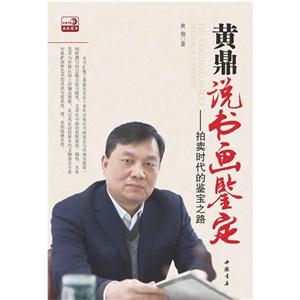
黄鼎说书画鉴定-拍卖时代的鉴宝之路
黄鼎说书画鉴定-拍卖时代的鉴宝之路 本书特色 新生代文物鉴定专家黄鼎先生,在书画的真假鉴别、揭伪、名家艺术与价格认知上独具慧眼。本书汇集了黄鼎先生近十多年以来在...
-
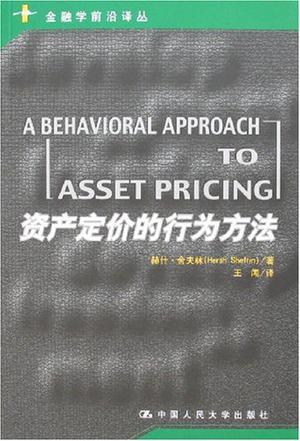
Hersh Shefrin《资产定价的行为方法》
《资产定价的行为方法》是关于研究“资产定价的行为方法”的专著,具体包括了:针对贝叶斯法则的含义、一个体现直观推断的简单资
-
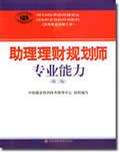
刘彦斌主|陈雨露《助理理财规划师专业能力》
《助理理财规划师专业能力(第三版)》目录第一章现金规划第二章消费支出规划第三章教育规划第四章风险管理和保险规划第五章投资规
-

股市操练大全-第十册
股市操练大全-第十册 本书特色 阅读《股市操练大全(第10册):捕捉黑马关键技巧特别训练专辑》犹如参加一场特殊的捕捉黑马强化训练班。《股市操作强化训练系列丛书:...
-

中国油画市场-第7辑(总第28辑)
中国油画市场-第7辑(总第28辑) 内容简介 忻东旺,赫赫大名,响彻艺圈、藏圈,近年更是如火如荼,被新生代画家追崇。被老辈艺家嘉许,被新老藏卖家竞相争夺,—直以...
-

潘伟君《追求完美》
股票市场上有各种各样的投资者,但不论散户、大户还是机构,都可以分成两类:一类是“猜”股价走势的,也就是分析和判断股价走势
-

奇石鉴赏与收藏
奇石鉴赏与收藏 本书特色 顶级专家刘道荣主编、实用性超强、拥有海量鉴定方法和收藏投资技巧。奇石鉴赏与收藏 内容简介 奇石是大干世界的缩影,一石一景,一石一物,一...
-

镜文化与铜镜鉴赏
镜文化与铜镜鉴赏 内容简介 本书共分为:上卷 镜文化总论;下卷 历代铜镜简介两部分,主要内容包括:鉴与镜、镜文化、铜镜十大功能、铜镜之命名等。镜文化与铜镜鉴赏 ...
-

最轻松的投资心理学
最轻松的投资心理学 本书特色 《*轻松的投资心理学》编著者王保蘅。投资和心理学表面上看似毫无关联,但实际上却存在千丝万缕的联系。比如,投资者为了获取高额的投资回...
-

傻瓜式投资
本书由雪球SOSME与小小辛巴联袂推荐! 很多时候全仓甚至加杠杆都跑不赢市场,为什么用半仓策略却能跑赢? 因为炒股短期是赌波动的胜负游戏,而长期却是一种生存游戏...
-

钟麟《庄家坐庄密码》
钟麟,男,1966年12月生,湖南衡阳人。上海麒麟上善资产管理有限公司总裁,市场尊称:“猎庄大鳄”。1992年入市,2000年荣获全国
-
![[美] 吉姆·罗杰斯《世界地图就是你的财富版图》](http://oss.shudanhao.com/caiji/chazidian/2023/7224.jpg)
[美] 吉姆·罗杰斯《世界地图就是你的财富版图》
《世界地图就是你的财富版图:投资大师罗杰斯环球投资笔记》内容简介:1999年,黄色的奔驰车载着罗杰斯和他的妻子佩蒂•派克从冰岛
-

空空道人实盘解析
空空道人实盘解析 内容简介 作者接触资本市场已近二十年里,在长期对市场认知、理解、并*终独立去解析这个市场运转规律的过程中,积累了对市场的解读理念与操盘方式,本...
-
![[美] 恩格《交易规则2》](http://oss.shudanhao.com/caiji/chazidian/2023/5853.jpg)
[美] 恩格《交易规则2》
《交易规则2:股市成功的50贴妙方》中,你会发现一些同原来的《交易规则》相似的观点,也会看到另外许多在其他任何书籍中都找不到
-

麥馬斯特《交易的藝術》
市場分析不是一門精確的科學,而是一門藝術,而精通這門藝術的秘訣就在於靈敏的直覺和反應,即豐富的心理資本。本書將各種不同的
-

MEtaTrader4外汇自助交易圣经
MEtaTrader4外汇自助交易圣经 本书特色 过去一年西方国家面临着主权债务问题,相较于2008年的次贷危机,其影响会更深远些,因为国家负债规模大于企业。债...
-
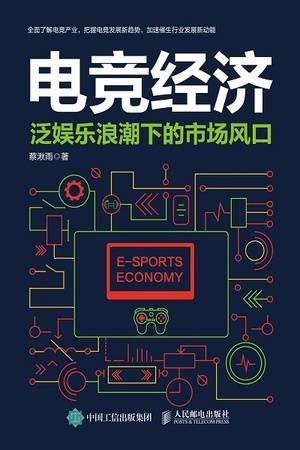
电竞经济
《电竞经济》内容简介:本书从正在崛起的电竞经济、电竞产业链、电竞商业模式、引爆移动电竞、移动电竞发展战略、电竞直播、VR电竞
-

2020—2021年中国工业节能减排蓝皮书
《2020—2021年中国工业节能减排蓝皮书》内容简介:本书基于全球化视角,对过去一年中我国及世界主要国家工业节能减排的发展态势进
-

富爸爸,穷爸爸
富爸爸,穷爸爸 本书特色 今天的财富是选择,因为选择,你可以拥有更多物质,有更多的舒适、快乐和自由,你可以成为你想成为的人;因为选择,你可以更加困难地生活或困惑...
-
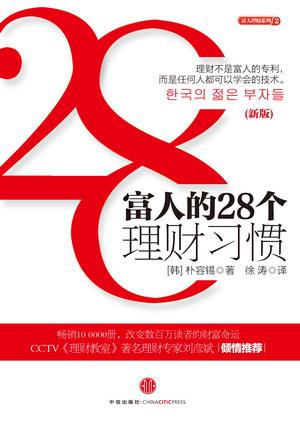
朴容锡《富人的28个理财习惯》
同样是同年毕业的同学,为什么短短几年后,别人能买得起房和车,自己却依然口袋空空、为房租发愁?努力工作就能赚钱?赚多少钱才

